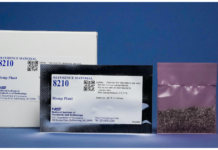Whether your business is in cannabis or automobiles, earned media is an integral part of sales and growth. You’ve probably participated in it without knowing—from something as small as sending your friend a link to a product they might enjoy or a larger gesture like writing a full-fledged product spotlight. And like most valuable assets, acquiring earned media takes a great deal of effort, strategy, and patience. While earned media is only one part of a well-developed media strategy, it is a significant part that cannot be ignored.
Earned media definition
In the simplest terms, earned media is the unpaid coverage or promotion of your brand that falls under the larger umbrella of content marketing. And by coverage, we’re talking about product and service reviews, user-generated content, interviews, and any other mentions of your brand. For businesses trying to reach new and existing customers, there are three avenues of media to understand: paid media, owned media, and earned media.
Paid media is anything you have to buy. If you purchase ad placement in a magazine, on the radio, in a newspaper, on a website, or if you hire an influencer to be the face of a social media campaign, you’re dealing with paid media. With paid media, you have a strong influence over the messaging even if it’s not 100-percent under your control at all times, as would be the case with an influencer.
Owned media is exactly what its name implies: coverage through outlets you own. If you own a pre-roll company that operates a blog, and that blog publishes a post about your newest pre-rolls, you’re dealing with owned digital media. With owned media, you have total control over the messaging and placement of your message.
Both paid media and owned media are largely under your control, but earned media is not. While you can pay influencers to promote your product in a specific way or hire a writer to create an in-house article about your latest innovation, earned media—like a product review on someone else’s website or in a newspaper or magazine—is entirely out of your hands. According to a Forrester Consulting study commissioned by Cision, more than 70 percent of marketing directors in North America use earned media to build and/or sustain brand awareness, create a competitive advantage, build and/or sustain customer loyalty, and promote company values.
Earned media in cannabis
For most businesses, earned media is pretty straightforward. For instance, Tesla does not spend money on traditional advertising and is still the largest automaker by market capitalization. Tesla has accomplished this through revolutionary car designs, cofounder Elon Musk’s online presence, publicity stunts, and word of mouth.
But does earned media function in the same way for something like cannabis? According to Nick Olsen, account supervisor at PR Return Inc., yes.
“As cannabis has normalized in recent years—despite remaining federally illegal—it’s become largely the same as most other consumer packaged goods (CPGs),” he said. “Cannabis marketers and public relations pros should consider the long-established lessons from CPG marketing and follow a similar approach. Earned media comes from quality products, compelling stories and angles, and relationship-building with reporters and editors.”
However, that’s not to say earned media in cannabis isn’t without unique obstacles.
“Many major household news outlets just won’t cover cannabis at all, because it’s not federally permissible,” said Shawna Seldon McGregor, founder and chief executive officer at Maverick Public Relations. “Another issue is that many major news outlets now demand that media-relations agencies participate in affiliate programs if they want their products included in product roundups. However, many of these affiliate programs won’t allow THC products to be included.” [Editor’s note: mg Magazine does not participate in affiliate marketing and does not charge for any form of editorial content.]
How to get earned media in cannabis
According to McGregor, someone with a great product who has limited money and zero industry connections should break their earned media strategy into three simple steps.
- Determine your target audience and media channels, which are the places your audience consumes media.
- Start a press list by identifying the reporters and thought leaders covering your space, whether that’s retail, cultivation, distribution, extraction, etc. Once you’ve identified them, follow them on Twitter and ask them to connect on LinkedIn.
- Invite these thought leaders and media members to tour your facility. Regularly share news with them. And when they call and want to include you in a story, respond by their deadline.
Determine your targets
In cannabis, finding your audience and the media channels members prefer comes down to one unavoidable task: research.
“Many agencies and brands take a broad approach to pitching … but that only irritates reporters who already have an inbox full of pitches,” said Olsen. “Instead, spend the time digging deeper than the surface level to determine what topics a reporter covers and compare it to what you’re planning to send them.”
If you don’t know where to begin your research, start by determining who’s purchasing your products and services, and then see if you can figure out where they get their information.
“That’s the audience you should prioritize in your PR efforts,” said Kraig Smith, founder of PR Return. “Federal prohibition often increases the need among cannabis businesses for accounting, legal, marketing, and other ancillary services, and a lot of professional services firms now specialize in cannabis. Just like cannabis brands need to reach their target customers, ancillary-services providers can benefit from gracing the pages of mg Magazine to get in front of theirs.”
Build relationships
Without genuine, mutually-beneficial relationships, a brand is going to struggle to get earned media regardless of the legwork they’ve put in elsewhere.
“Relationship-building is critically important,” said Olsen. “At PR Return, we preach that reporters are also our clients, even though they’re not the paying kind. Their needs are just as important as the clients we represent. Reporters are often on tight deadlines, have specific questions on a topic, and need to know they can turn to you for fast, factually accurate responses. Building this trust takes time and effort. As the trust builds and the relationship grows, reporters are likely to reach out proactively with requests they believe you can help with.”
But how do you start building these relationships?
According to Lucas Wentworth, account manager at NisonCo., you should “reach out to reporters and genuinely try to help make their lives easier. That may mean helping them on background without being [quoted] for a few stories, but you should focus first and foremost on building relationships.”
And while the squeaky wheel does have a tendency to get greased, it’s important not to come on too strong if you want to build a valuable and long-lasting relationship. As Maverick’s McGregor put it succinctly, “If you really want earned media coverage, be transparent, respectful, and meet the journalist’s deadline.”
Best and worst earned-media practices
When you’re a new brand just starting out, it’s important to avoid the same early mistakes other businesses are making. “The biggest common mistake I see … is [not] understanding the nuances and definitions of earned media as it falls under the umbrella of marketing,” said McGregor.
Newer businesses tend to think they can hold some level of control over the earned media narrative, but that’s a privilege reserved for paid and owned media.
“Your earned media needs to be focused on newsworthy and compelling topics that address the 24-hour news cycle we’re currently in,” said McGregor. “As I write this—the first week of [October] 2022—I’m thinking about how I can get my clients’ positions into political campaigns from local to state to federal; economic stories, including the macro-level of economic challenges to micro-level business expansions, and news that can be truly considered material, such as C-suite leadership moves or entries into new geographic markets, etc.”
Many who are new to the media landscape will believe they can push through by appealing to antiquated stereotypes that fall flat with today’s cannabis culture.
“The biggest mistake is treating cannabis consumers like the traditional stoner stereotype,” said Olsen. “By this point, most reporters are well aware that cannabis consumers are your average consumer who is trying to incorporate purposeful cannabis consumption into their daily lives. If new brands and dispensaries pitch media using tired stoner tropes, media will likely dismiss their pitches in favor of those from companies who have a clear understanding of who their consumers are and why they consume.”
Pitching a story
Once you’ve defined your target audience and established a few relationships, the final big step is pitching your product to appropriate reporters, editors, and content creators. But remember, once the story is out there, it’s now out of your control. So make sure you’re pitching to the appropriate people in the appropriate way and providing the most accurate and succinct information possible.
Even if you’re paying for an industry-leading publicist and approving all of the messaging and pitch angles, the story ultimately will be out of your hands. “You can’t make the reporter write a specific sales message you want to put out there,” said McGregor. “In fact, bullying a journalist will likely only have the opposite result of your desired outcome. If you aren’t serving up a compelling pitch, you will never hit a home run.”
So what makes a pitch pitch-perfect?
There is no such thing as the perfect pitch, because it’s going to change depending on the product or service you’re offering. But McGregor believes specificity is paramount across the board.
“For earned media, the most important part is getting to the point quickly and concisely. In my very humble opinion, your first sentence should clearly explain what you want from the journalist. I believe a pitch should only be about five sentences,” she added.
This sentiment goes back to building relationships and making the lives of journalists easier so they’re more willing to help you.
“In general, there’s now about one journalist to every 10 publicists,” said McGregor. “But it must feel like a lot more to that poor journalist. Of course, we want to keep our journalist friends informed. However, these days, our journalist friends are completely overwhelmed and mostly just deleting email pitches that have nothing to do with what they cover.”
For Alexa Oliphant, public relations account supervisor at Kip Morrison & Associates, the most important elements of a really good pitch are interest and timing.
“If how you’re talking about your work is a snooze for you, why would it be interesting to a writer or podcast host? A humble explanation won’t grab anyone’s attention, so I like making my pitches fun, but informative,” said Oliphant. “People who are receiving your outreach are the best in the business and have seen it all, so you need to find a way to light them up. The other great thing to consider is timing. If you’re pitching best products for Valentine’s Day, familiarize yourself with editorial calendars for when to appropriately send ideas for the holiday. It wouldn’t make sense to pitch that the same week or six months before, you have to be mindful of when media are actually working on stories before publication.”
Takeaways
Earned media is important to brand growth and should be part of a larger content marketing strategy alongside your paid and owned media efforts. Take the time to identify which media outlets are popular among your target audience. Build mutually beneficial relationships with the individuals and outlets covering the types of products or services you offer. Give the process time and treat each interaction like a real relationship, and you will be able to earn some valuable media coverage. Finally, when in doubt, seek an industry-focused public relations professional to help fast-track the entire process.










[…] Get the hardware wrong, and customers will buy your product exactly once … and worse, probably complain to their friends about the poor […]
[…] investment officer at private equity investment firm Delta Emerald. As he evaluates software and media companies, he looks for unique technologies that can’t be replicated or replaced easily by competitors or […]
[…] in marketing a lifestyle or experience. They and Amazon use the same methods—advertising, media coverage, newsletters, social media—but the major focus is on how their products will make your life more […]
[…] But public companies are, in some ways, truly owned by the public. Once you’ve gone public, you suddenly face scrutiny in ways that don’t apply to private companies—board oversight of decision-making, public quarterly reports, market regulations and compliance requirements—and your company’s high profile is always in the media spotlight. […]
[…] To help us determine Denver’s best dispensaries, we searched popular review platforms like Google, Leafly, Weedmaps, and Yelp, accounting for the total review score, number of reviews, and strong marks repeated across multiple review sites. Our final list includes eight of the top consumer-rated dispensaries in the Mile High City, catering to loyal locals as well as tourists on a mission to uncover an unforgettable, Instagrammable, and quintessentially Colorado cannabis experience. While this list is helpful for consumers, dispensary owners in any market should pay close attention to the retailers who’ve clearly excelled at connecting with people in ways that motivate them to share their positive shopping experiences in the form of powerful world of mouth marketing. […]
[…] the same way that the right ‘earned-media’ placements allow brands to borrow from the legitimacy of the publication covering them, the same can be said […]
[…] According to Floyd, even bigger brands like Pepsi often have smaller marketing budgets than you’d think, centered on scrappy, earned media campaigns. […]
[…] the case of ChatGPT, the media darling of AI, the software maps words in an effort to understand the relationship between every word in […]